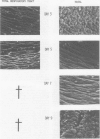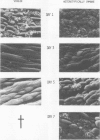Abstract
An infection established throughout the total respiratory tract of mice with a highly lung adapted influenza virus (H0N1) led to death from viral pneumonia. The 50% lethal dose (LD50) was approximately the same as the 50% infectious dose (ID50). An infection with the same virus initiated in the nasal mucosa spread to the trachea and lungs over a 3- to 5-day period but was not lethal except at very high infecting doses. The LD50 was 30,000 times the ID50. Mice that had recovered from a prior infection with A/PC/73(H3N2) demonstrated enhanced recovery (heterotypic immunity) when challenged with A/PR/8/34(H0N1). Heterotypically immune mice infected while anesthetized with this potentially lethal virus stopped shedding virus from the nose, trachea, and lungs by day 7 and recovered. Heterotypically immune mice, infected awake, stopped shedding virus from the nose by day 5, and, in fact, the virus did not spread to the trachea or lungs. Thus, some of the variation in the severity of influenza infections may be explained by two factors: the site of initial infection and previous infection with heterotypic influenza virus.
Full text
PDF


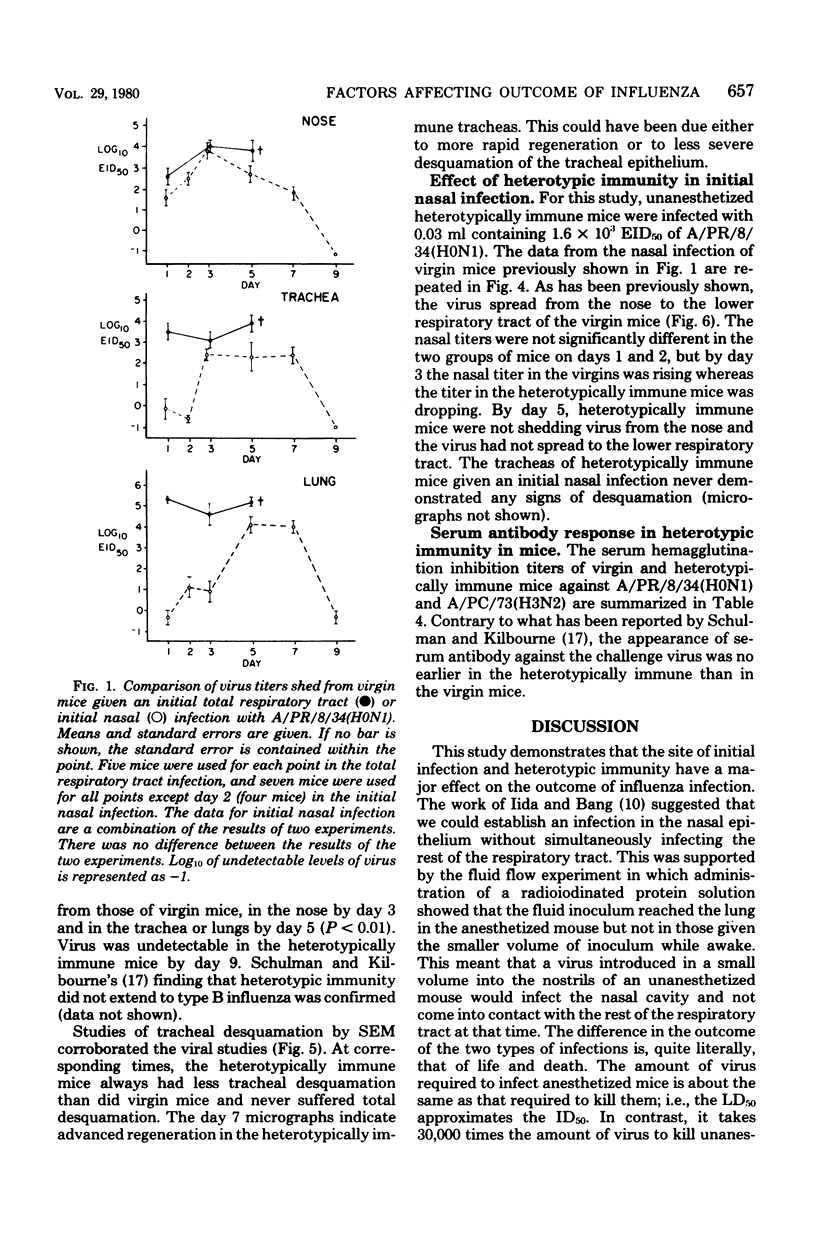
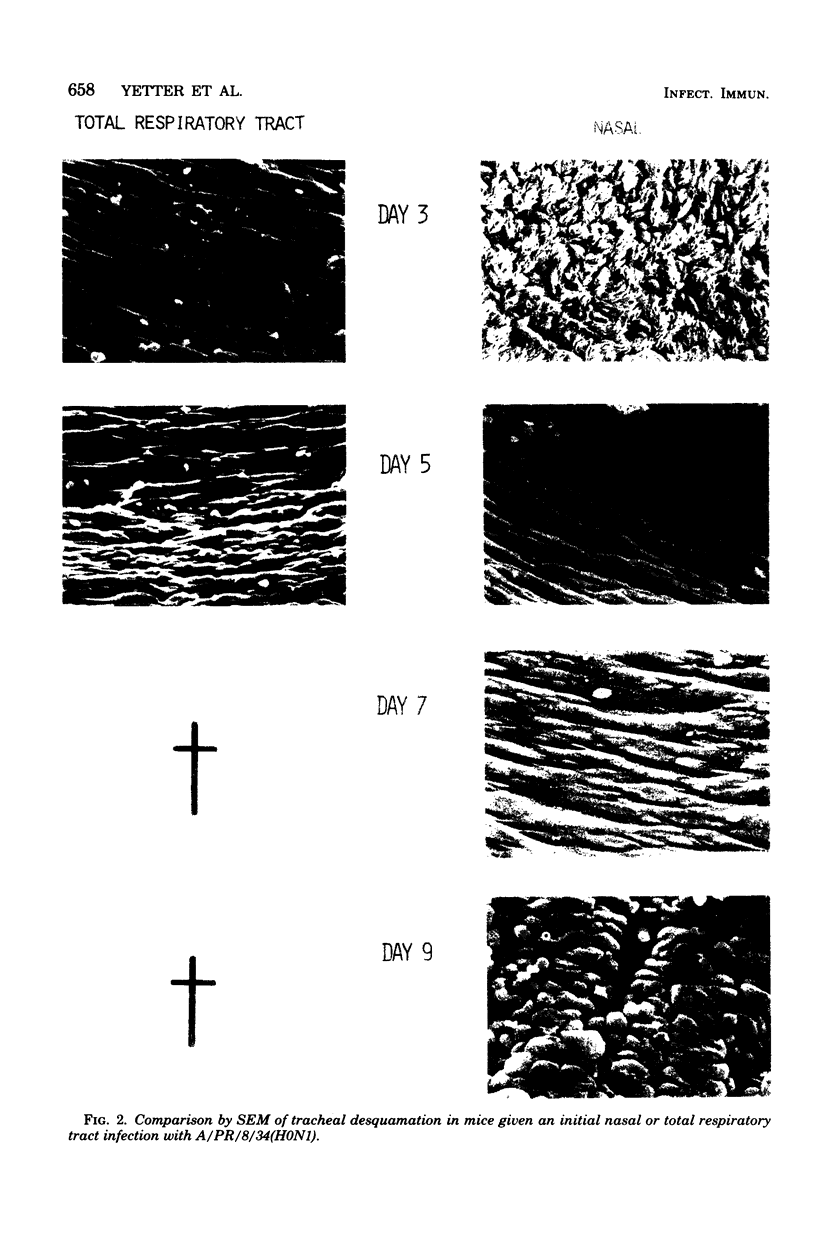
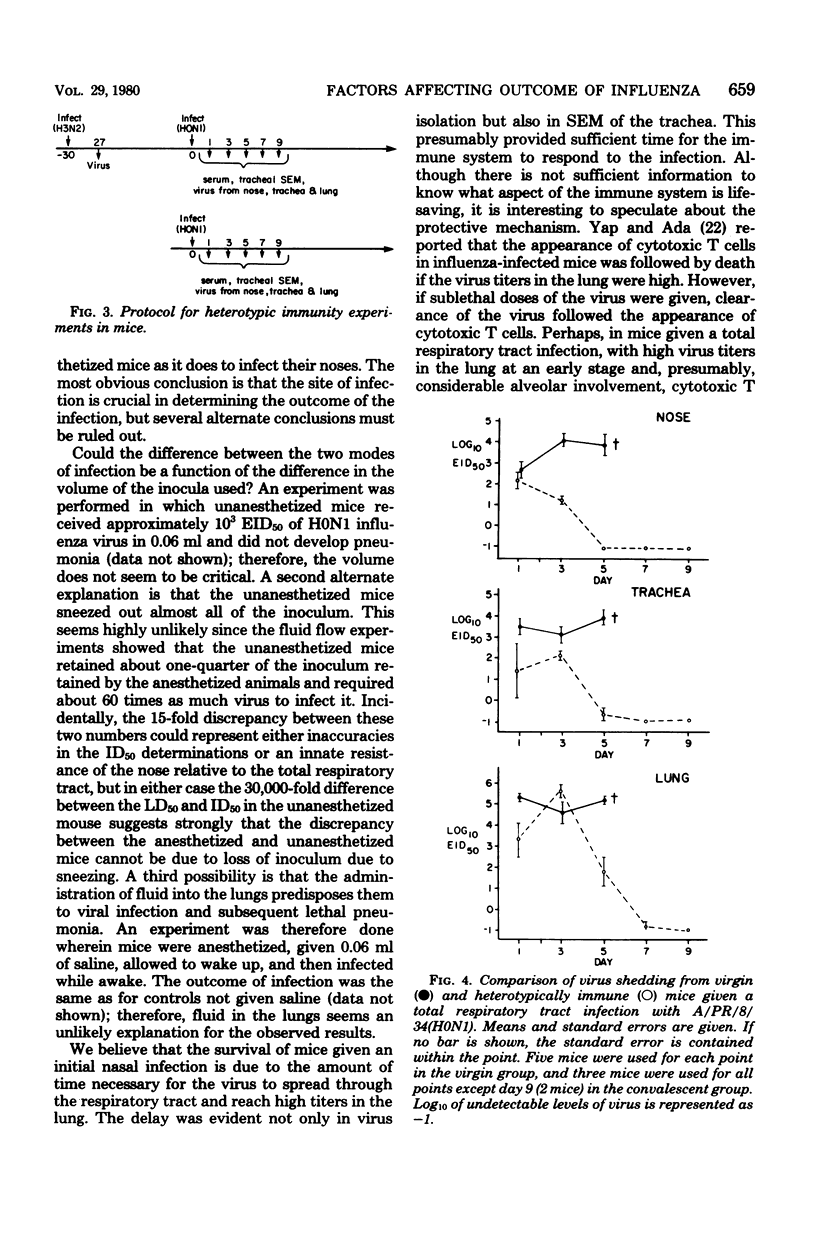

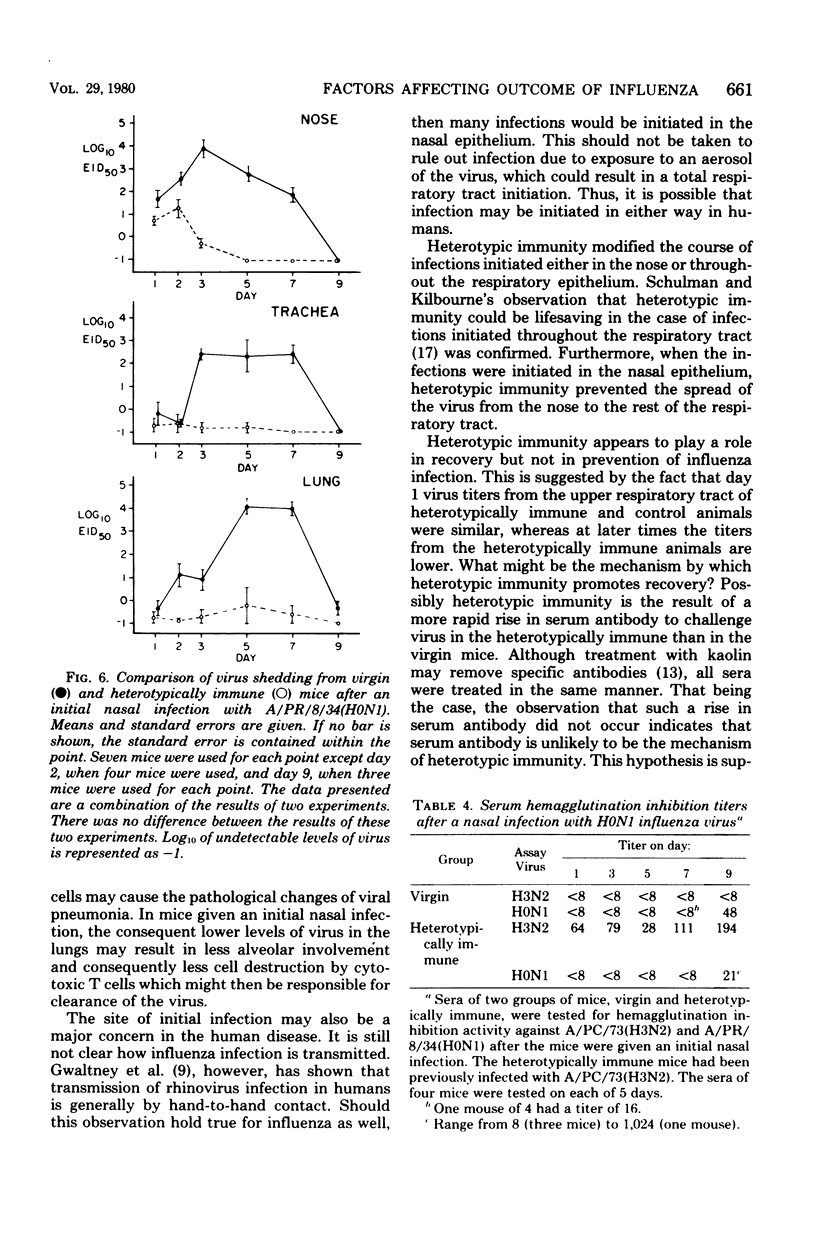
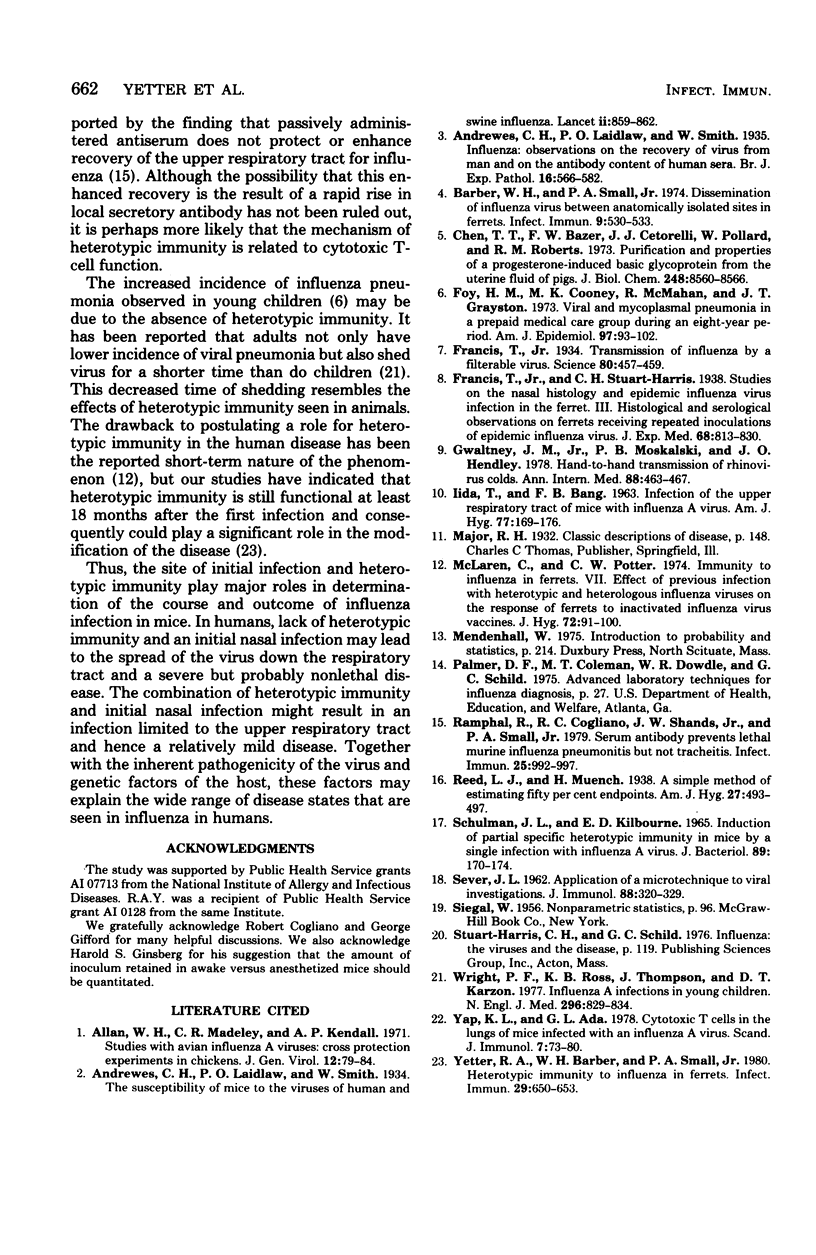
Images in this article
Selected References
These references are in PubMed. This may not be the complete list of references from this article.
- Allan W. H., Madeley C. R., Kendal A. P. Studies with avian influenza A viruses: cross protection experiments in chickens. J Gen Virol. 1971 Aug;12(2):79–84. doi: 10.1099/0022-1317-12-2-79. [DOI] [PubMed] [Google Scholar]
- Barber W. H., Small P. A., Jr Dissemination of influenza virus between anatomically isolated sites in ferrets. Infect Immun. 1974 Mar;9(3):530–533. doi: 10.1128/iai.9.3.530-533.1974. [DOI] [PMC free article] [PubMed] [Google Scholar]
- Chen T. T., Bazer F. W., Cetorelli J. J., Pollard W. E., Roberts R. M. Purification and properties of a progesterone-induced basic glycoprotein from the uterine fluids of pigs. J Biol Chem. 1973 Dec 25;248(24):8560–8566. [PubMed] [Google Scholar]
- Foy H. M., Cooney M. K., McMahan R., Grayston J. T. Viral and mycoplasmal pneumonia in a prepaid medical care group during an eight-year period. Am J Epidemiol. 1973 Feb;97(2):93–102. doi: 10.1093/oxfordjournals.aje.a121493. [DOI] [PubMed] [Google Scholar]
- Francis T., Jr TRANSMISSION OF INFLUENZA BY A FILTERABLE VIRUS. Science. 1934 Nov 16;80(2081):457–459. doi: 10.1126/science.80.2081.457-a. [DOI] [PubMed] [Google Scholar]
- Gwaltney J. M., Jr, Moskalski P. B., Hendley J. O. Hand-to-hand transmission of rhinovirus colds. Ann Intern Med. 1978 Apr;88(4):463–467. doi: 10.7326/0003-4819-88-4-463. [DOI] [PubMed] [Google Scholar]
- IIDA T., BANG F. B. Infection of the upper respiratory tract of mice with influenza A virus. Am J Hyg. 1963 Mar;77:169–176. doi: 10.1093/oxfordjournals.aje.a120306. [DOI] [PubMed] [Google Scholar]
- McLaren C., Potter C. W. Immunity to influenza in ferrets. VII. Effect of previous infection with heterotypic and heterologous influenza viruses on the response of ferrets to inactivated influenza virus vaccines. J Hyg (Lond) 1974 Feb;72(1):91–100. doi: 10.1017/s0022172400023251. [DOI] [PMC free article] [PubMed] [Google Scholar]
- Ramphal R., Cogliano R. C., Shands J. W., Jr, Small P. A., Jr Serum antibody prevents lethal murine influenza pneumonitis but not tracheitis. Infect Immun. 1979 Sep;25(3):992–997. doi: 10.1128/iai.25.3.992-997.1979. [DOI] [PMC free article] [PubMed] [Google Scholar]
- SCHULMAN J. L., KILBOURNE E. D. INDUCTION OF PARTIAL SPECIFIC HETEROTYPIC IMMUNITY IN MICE BY A SINGLE INFECTION WITH INFLUENZA A VIRUS. J Bacteriol. 1965 Jan;89:170–174. doi: 10.1128/jb.89.1.170-174.1965. [DOI] [PMC free article] [PubMed] [Google Scholar]
- SEVER J. L. Application of a microtechnique to viral serological investigations. J Immunol. 1962 Mar;88:320–329. [PubMed] [Google Scholar]
- Wright P. F., Ross K. B., Thompson J., Karzon D. T. Influenza A infections in young children. Primary natural infection and protective efficacy of live-vaccine-induced or naturally acquired immunity. N Engl J Med. 1977 Apr 14;296(15):829–834. doi: 10.1056/NEJM197704142961501. [DOI] [PubMed] [Google Scholar]
- Yap K. L., Ada G. L. Cytotoxic T cells in the lungs of mice infected with an influenza A virus. Scand J Immunol. 1978;7(1):73–80. doi: 10.1111/j.1365-3083.1978.tb00428.x. [DOI] [PubMed] [Google Scholar]
- Yetter R. A., Barber W. H., Small P. A., Jr Heterotypic immunity to influenza in ferrets. Infect Immun. 1980 Aug;29(2):650–653. doi: 10.1128/iai.29.2.650-653.1980. [DOI] [PMC free article] [PubMed] [Google Scholar]



